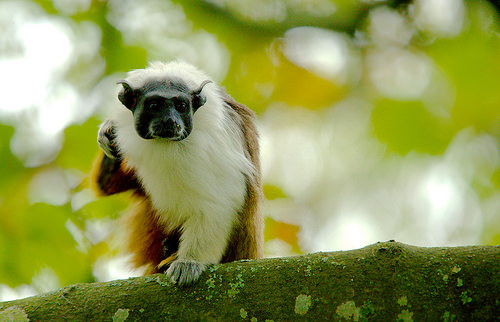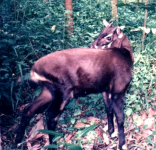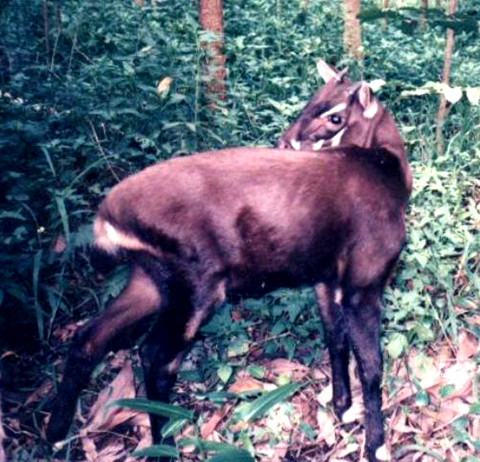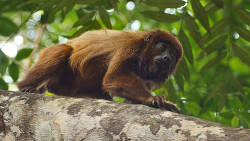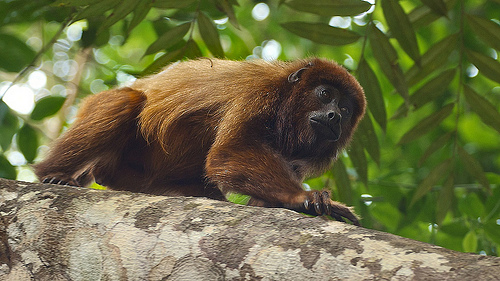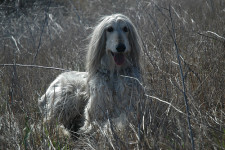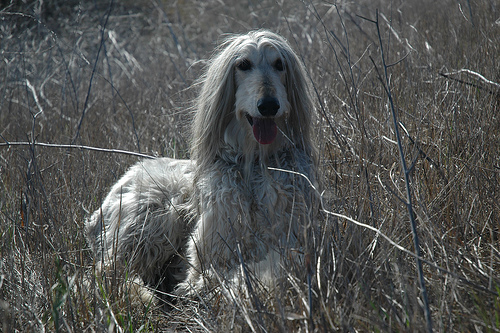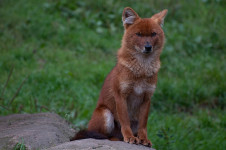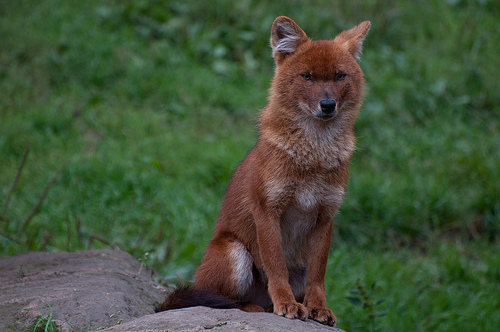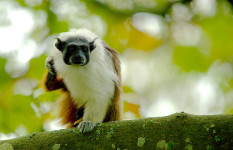
Pied tamarins… cute or ugly?
- Pied tamarins, also known as ‘pied bare-faced tamarins’ and ‘Brazilian bare-faced tamarins’, are primates of small size, native to the Brazilian rainforests of South America.
- The scientific name of a pied tamarin is Saguinus bicolor, and it is from the family Callitrichidae, a family of New World monkeys that consists of tamarins and marmosets.
- The height of pied tamarins ranges from 18 to 30 centimetres (7 to 12 inches), not including their long tail, and they generally weigh between 220 to 900 grams (0.5 to 2 pounds).
- Fruit, nectar, frogs, eggs, lizards, spiders, insects and flowers make up the primary diet of pied tamarins.
- Pied tamarins live in troops of three to fifteen and are protective of their territory, and they rest in trees at night, and forage for food in the daytime.
Pied Tamarin
Image courtesy of Josh More/Flickr
- The fur of the upper body of a pied tamarin is generally white in colour, although its face is black and has no fur, while the lower body is generally a combination of black, red, tan and brown fur.
- Pied tamarins have been listed as an endangered species, threatened primarily by habitat loss, and as such, they only occupy a small area in Brazil.
- Each year, the dominant female in a troop of pied tamarins usually gives birth to twins, rather than a single baby, both of which are cared for by members in the group, including other females, males and more mature siblings.
- Pied tamarins generally have a lifespan of eight to fifteen years, and their predators include hawks, feral cats and snakes.
- Noises such as whistles and chirps are used by pied tamarins to communicate between each other, as well as to scare off threats.
Bibliography:
Pied Tamarin, 2001, Lincoln Park Zoo, http://www.lpzoo.org/animals/factsheet/pied-tamarin
Pied Tamarin, 2015, A-Z Animals, http://a-z-animals.com/animals/pied-tamarin/
Pied Tamarin, 2015, Wikipedia, https://en.wikipedia.org/wiki/Pied_tamarin






